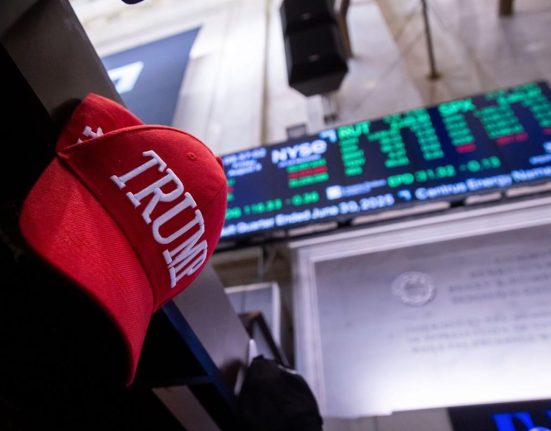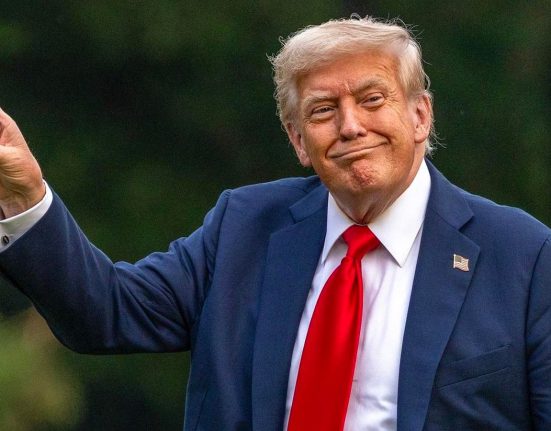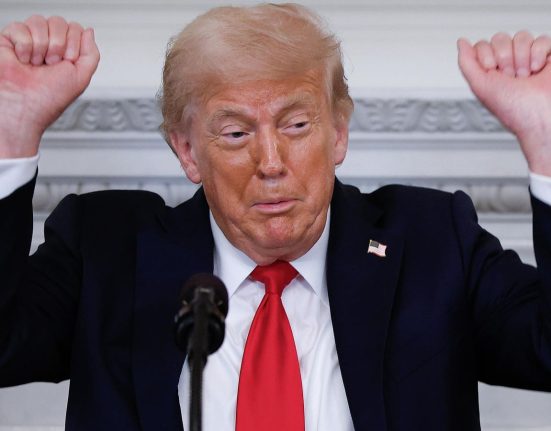Less than an hour’s drive from downtown Kyiv, a cluster of sleek black modular buildings with metal roofs and dark-tinted glass stand in an open field.
But no one will ever live in them because this is a new training facility for Ukrainian soldiers.
The muffled cracks of suppressed gunfire pierce through the August afternoon air, days before Vladimir Putin meets Donald Trump in Alaska 5,000 miles away. Here, despite mounting international hopes for a ceasefire, Ukraine is preparing for the future and a long war with Russia.
“There have been so many of these meetings, we don’t pay attention any more,” says one elite fighter, scouting the grounds for future training sessions with his team.

As world leaders meet in Alaska, Ukrainian troops keep their focus on the battlefield – Anadolu/Getty
Behind every soldier at the range stands an army of workers in factories, keeping the war supplied. In drone factories across Ukraine, no one is holding their breath for a breakthrough at Friday’s meeting.
Even if a ceasefire is reached, few believe Putin wants lasting peace. Many see the country’s rapidly expanding defence industry as Ukraine’s most reliable security guarantee.
“If you want peace, be prepared for war,” says Aleksey Dudkin, a representative from TerMIT, a Ukrainian drone company supplying unmanned ground drones to the Ukrainian military. “Nobody is stopping; we are even increasing the amount of production.”
This year, the Ukrainian government ordered 10,000 ground drones – 2,000 to be made by TerMIT – for logistics, medical evacuations, and, increasingly, direct assaults on Russian positions.
Last winter, Ukraine’s elite Khartiia Brigade carried out the first successful all-drone assault on Russian forces, an unprecedented feat in modern warfare and a signal that innovation is moving faster than politics can keep pace.
Ukraine is ramping up drone production with no signs of slowing down. At the start of the full-scale war, Ukraine produced about 5,000 drones per year. This year, that number is expected to reach 4 million.
“The number of drones we can make is increasing every day,” says Mr Dudkin. When TerMIT first began production in 2024, it produced 20-25 ground drones per month, now it is producing as many as 350 every month.

10,000 ground drones were ordered this year alone, transforming how Ukraine fights – Pierre Crom/Getty
It’s not just the big companies making profits from drones. “Every grandma who used to sell sunflowers on the corner is now selling drone parts,” one soldier tells The Telegraph. “Everybody’s making a living.”
At the start of the war, Ukraine had relied heavily on Western military aid. Now, more and more defence production is taking place inside the country. “We have switched to all Ukrainian producers,” explains Mr Dudkin. “All microchips and engines are made in Ukraine.”
According to Mr Dudkin, 70 per cent of a TerMIT drone is built with Ukrainian parts. This shift toward domestically produced weapons extends across the sector. Ukraine’s deputy defence minister, Valerii Churkin, says 95 per cent of all aerial drones used on the front lines are now Ukrainian-made.
Russia is also keeping pace in drone production. This year, it is expected to manufacture 79,000 Shahed drones, according to Ukraine’s military intelligence agency (HUR). Hundreds have been launched at Ukrainian cities on a nightly basis since ceasefire talks began earlier this year, a figure expected to soon reach the thousands.
Moscow shows no sign of slowing down. Over the next three years, the Kremlin plans to invest an additional $1.38 billion in drone production.
Since talks of a ceasefire began, Mr Dudkin says they have seen no slowdown in demand. “We have seen an increase, every hour, every day.”
But the goal is not to prolong the war. “The goal is to save lives,” Mr Dudkin explains. A ground drone can carry supplies that would typically require six soldiers, and can take on dangerous tasks such as laying or clearing mines, keeping troops out of harm’s way.
The looming question is what will happen to these companies if a ceasefire deal is reached in Alaska this Friday. “We will finish what we have started,” says Mr Dudkin, referring to their contracts with the Ukrainian government. “Ukraine is one of the most mined countries in the world. We still have plenty of work ahead of us.”
If the war ends with a ceasefire, it will leave behind a massive defence industry in Ukraine. Drone companies have boomed since the invasion, with firms like TerMIT seeing sharp increases in value. “One year ago, our company was valued at 1 million hryvnias ($24,000). Now its capitalisation is around 60 billion,” Mr Dudkin says, adding that they are hiring new engineers every day.
“Our main goal is to increase production all over the world,” explains Mr Dudkin, who says TerMIT is currently in discussions with clients in the United Kingdom.
It comes as Volodymyr Zelensky met Sir Keir Starmer in Downing Street on Thursday to discuss Ukraine’s demands for a peace settlement.
Mr Zelensky had attended a virtual summit with Mr Trump and other European leaders, including Sir Keir, Emmanuel Macron and Friedrich Merz on Wednesday.
Speaking after the talks, the Ukrainian president said his American counterpart backed security guarantees for Ukraine. In the past months, Washington has kept security guarantees – some kind of commitment that America would be willing to enforce the terms of any peace deal – for Ukraine off the table, despite it being a key demand from Kyiv.
After the European leaders rallied around Mr Zelensky, Mr Trump threatened Putin with “severe consequences” if he did not agree to a ceasefire at the summit.

Despite diplomacy, few on the frontline believe lasting peace is near – Anadolu/Getty
But on the frontlines of Ukraine, very few expect peace anytime soon, and production continues at full pace. Even if a ceasefire deal is reached this Friday in Alaska, civilians, soldiers, and defence professionals alike share the belief that any peace with Russia cannot be trusted.
Back at the shooting range, a group of battle-hardened soldiers trains alongside new recruits.
“Putin hasn’t and won’t ever change his view that Ukraine shouldn’t be an independent country,” says one. “Ukraine will continue to fight for its freedom and its right to exist, whatever happens.”







